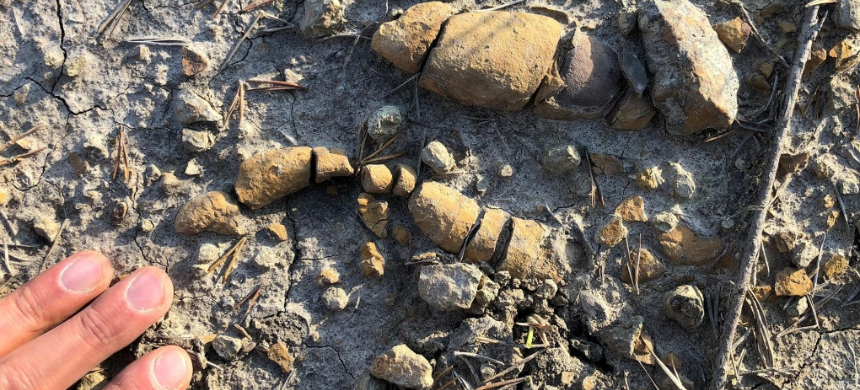Fossilised Faeces Sheds New Light on Dinosaur Evolution, Study Reveals
A groundbreaking study has provided fresh insights into how dinosaurs ascended to dominate Earth, with the analysis of fossilized faeces, vomit, and undigested food. Published on Wednesday, the research sheds new light on the diets and habits of early dinosaurs, offering a clearer picture of their evolutionary rise.
Led by Martin Qvarnstrom from Sweden’s Uppsala University, the team worked with European researchers to examine over 500 “bromalites” (fossilised digestive remains) found in Poland. Using advanced technologies like synchrotron microtomography, they created 3D images of these samples, revealing crucial details about early dinosaurs’ diets over a span of 30 million years.
The bromalites contained remnants of insects, plants, fish, and larger animals, allowing scientists to trace dietary shifts and environmental changes. By combining these findings with fossil, plant, and climate data, the team mapped the evolutionary development of dinosaurs.
Qvarnstrom explained that the fossilised remains show how early dinosaurs adapted to environmental changes and diversified their diets. A notable example was Silesaurus, a 15-kilogram omnivorous ancestor of dinosaurs, which thrived on a diet of plants, insects, and fish. Unlike the dominant herbivores, like Dicynodonts, Silesaurus proved to be a versatile survivor during this period.
Read More: What Would Happen If the Earth Stopped Spinning?
The study also examined the impact of the Carnian Pluvial Episode, a period of heavy rainfall that promoted the growth of new plant species. While larger herbivores struggled to adapt, omnivorous dinosaurs like Silesaurus capitalized on the changing environment, setting the stage for the rise of long-necked plant-eaters like Diplodocus and large carnivorous predators.
The research adds to the ongoing debate about how dinosaurs came to dominate Earth. Two primary theories exist: one suggests that physiological traits like upright posture gave early dinosaurs a competitive edge, while the other posits that environmental upheavals eliminated their competitors, allowing dinosaurs to flourish.
The researchers proposed a synthesis of these theories, suggesting that dinosaurs’ adaptability and evolutionary traits enabled them to thrive in the wake of environmental disruptions.
While the study offers significant new insights, it is limited in scope, focusing primarily on the Polish Basin, which was part of the northern Pangea supercontinent. Qvarnstrom expressed interest in applying this methodology to southern Pangea, where dinosaurs first appeared, to further validate and expand these findings.
“This study should serve as a starting point for further research,” said Lawrence Tanner, a palaeontologist at Le Moyne College in New York.











